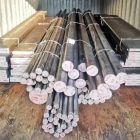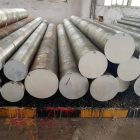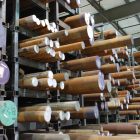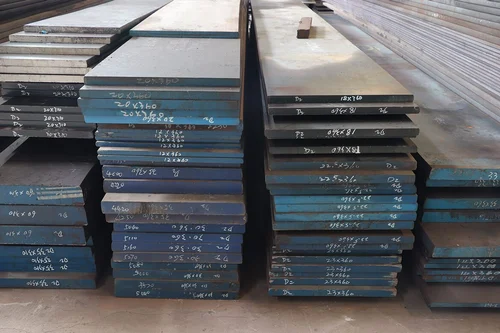Steel’s characteristics significantly have an impact by the hot rolling process. Through the process of normalization, which involves heating steel above its recrystallization temperature and cooling it to room temperature, the steel’s microstructure permanently alters, leading to increased toughness and ductility. Because of different qualities and h13 material price, the metal is simple to shape and bend.
The final metal piece’s general form has an influence by the hot-rolling process as well. Compared to cold-rolled forms, hot-rolled forms can be substantially bigger. However because hot rolled steel goes through heating and chilling, there is less control over the final product’s size and shape because of shrinkage. Touching the surface is one of the simplest methods to distinguish between hot-rolled and cold-rolled steel: the former has an uneven surface, while the latter feels greasy to the touch.
The Process of Hot Rolled Steel
Steel billets heat in a furnace to temperatures above the recrystallization point to start the hot rolling process. Usually, we heat steel to 2300°F at McDonald Steel Corp. The metal becomes easily pliable and formable when the heat from the furnace distributes uniformly throughout its length.
After leaving the furnace, the steel billets pass through our eleven-stand cross-country bar mill. A roughing stand and many two-high roll stands are part of this system. The metal is bent, stretched, and compressed as it passes through the stands, emerging from the last roll stand as a 140-foot segment.
The metal lengths are then placed in a cooling bed after being rolled. It takes less than two minutes to complete the procedure, which includes heating the furnace and placing a freshly rolled form on the cooling bed. Upon completion of the procedure, the billet’s initial square or rectangular profile has transformed into an uneven or asymmetrical piece.
Industry Applications for Hot Rolled Steel Industry
Hot rolled steel is inexpensive, ductile, durable, and simple to swiftly manufacture. But, the final result may come out a little bit smaller and irregular after cooling down from the first shaping process. Because of this, hot-rolled steel is perfect for demanding industrial uses.
The following are some of the most often-used applications across many industries:
- Agriculture: Grouser bars and other equipment parts are commonly of hot-rolled steel.
- Buildings of Bridges & Infrastructure: Steel that has been hot rolled can be used to make expansion joints and grid decks.
- Sheet piling: connections and industrial fasteners can be of hot-rolled steel.
- Defense and government: Due to its durability, 1.2083 material steel is often useful for ship deck rails.
- Handling of materials: Hot rolled steel is used by manufacturers to make a railing for trams or elevators, crane rail joints, and fork truck components.
- Joint bars: Hot-rolled steel is useful to make conventional joint bars, D-bars, and insulation.
- Automobile: Hot-rolled steel is useful by automakers to build vehicle rims and door hinges.
Transmission of Water: Steel that is hot can make spigot sections and pipe couplings.








